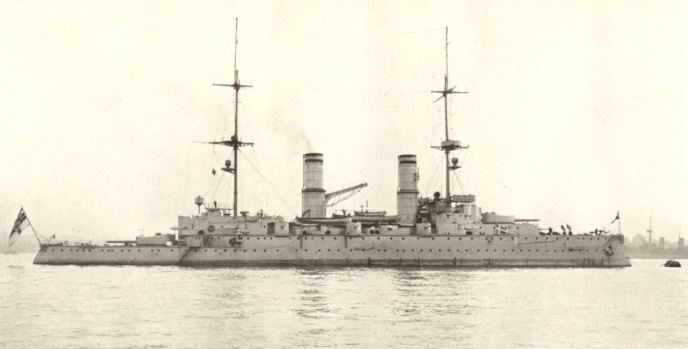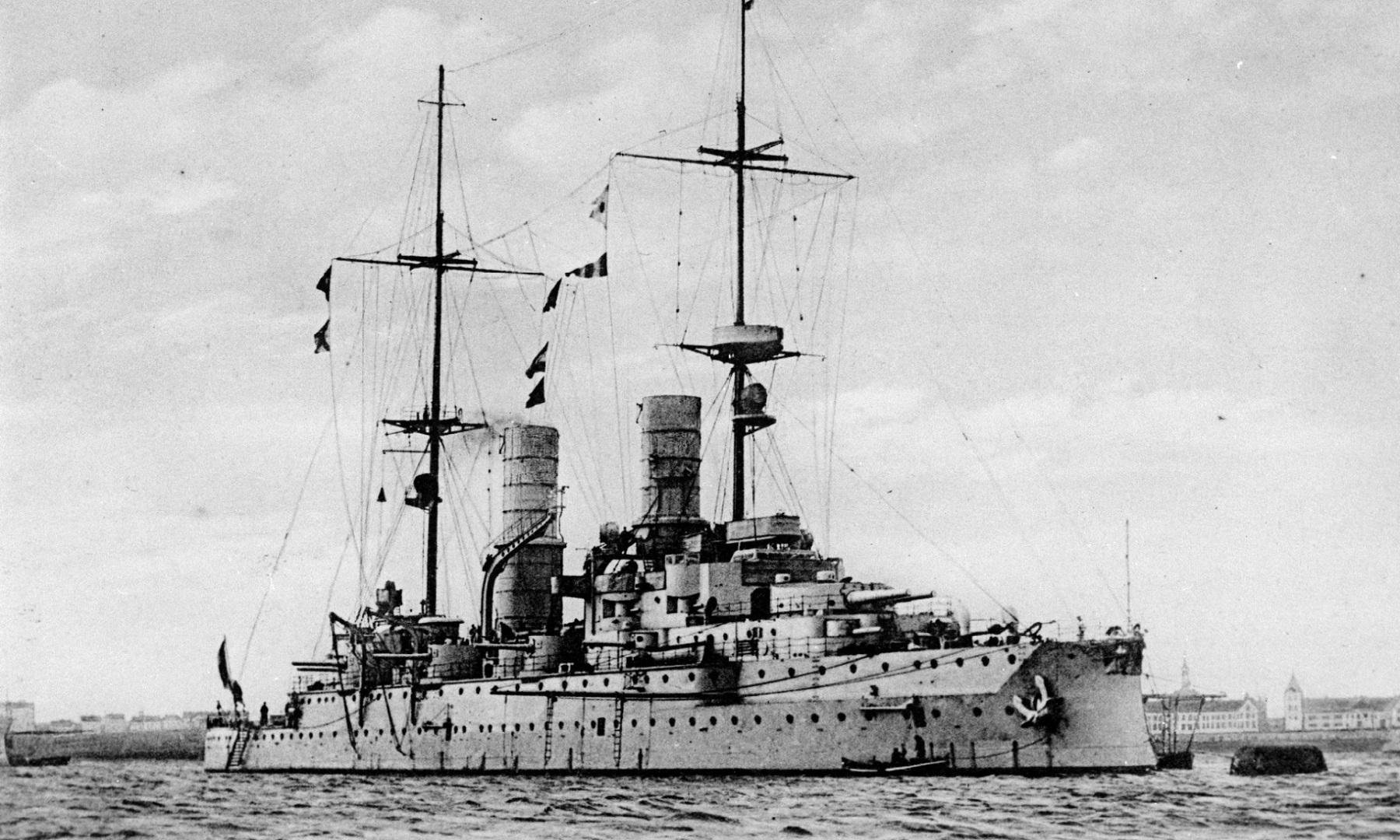German Pre-Dreadnought Battleship SMS Kaiser Barbarossa
SMS Kaiser Barbarossa was the fifth and final ship of the Kaiser Friedrich III-class of pre-dreadnought battleships constructed for the Imperial German Navy (Kaiserliche Marine) in the late 19th century.
Design and Construction
SMS Kaiser Barbarossa was laid down at the Schichau-Werke shipyard in Danzig (now Gdańsk, Poland) in 1898, launched on 21 April 1900, and commissioned into the fleet on 4 June 1901.
| Displacement | Normal: 11,097 t (10,922 long tons) Full load: 11,785 t (11,599 long tons) |
| Length | 125.3 m (411 ft 1 in) |
| Beam | 20.4 m (66 ft 11 in) |
| Draft | 7.89 m (25 ft 11 in) |
| Installed power | 12 × water-tube boilers 13,000 PS (12,820 ihp; 9,560 kW) |
| Propulsion | 3 × triple-expansion steam engines 3 × screw propellers |
| Speed | 17.5 knots (32.4 km/h; 20.1 mph) |
| Range | 3,420 nmi (6,330 km; 3,940 mi) at 10 knots (19 km/h; 12 mph) |
| Complement | 39 officers 612 enlisted |
| Armament | 4 × 24 cm (9.4 in) 40 cal guns 18 × 15 cm (5.9 in) SK L/40 guns 12 × 8.8 cm (3.5 in) SK L/30 guns 12 × 3.7 cm (1.5 in) machine cannon 6 × 45 cm (17.7 in) torpedo tubes |
| Armor | Belt: 300 mm (11.8 in) Deck: 65 mm (2.6 in) Conning tower: 250 mm (9.8 in) Turrets: 250 mm Casemates: 150 mm |
Peacetime Service
After commissioning, Kaiser Barbarossa was assigned to the Home Fleet (Heimatflotte) and served in the active battle line alongside her sister ships (SMS Kaiser Friedrich III, SMS Kaiser Wilhelm II, SMS Kaiser Wilhelm der Grosse and SMS Kaiser Karl der Grosse). She took part in training cruises, fleet manoeuvres, and diplomatic port visits, helping to improve fleet coordination and readiness.
During this time, the ship contributed to the operational development of the Imperial Navy, which was undergoing major reforms and expansion under Admiral Alfred von Tirpitz’s naval laws. Like the rest of her class, Kaiser Barbarossa became an essential tool for training officers and crew, despite being quickly eclipsed by newer designs.
With the arrival of dreadnought-type battleships such as HMS Dreadnought after 1906, Kaiser Barbarossa and her class became outdated and were gradually relegated to secondary duties. By 1909, she was removed from frontline service.
World War I Service
At the outbreak of World War I, Kaiser Barbarossa was mobilized along with her sister ships and formed part of the V Battle Squadron (V. Geschwader), which was tasked with coastal defence and training rather than offensive operations.
By 1915, the ship was deemed no longer seaworthy or strategically valuable, and she was disarmed. Her role was limited thereafter to a harbor and accommodation ship, first in Wilhelmshaven and later in Kiel.
Following Germany’s defeat in World War I and the imposition of the Treaty of Versailles, Kaiser Barbarossa was formally stricken from the naval register in 1919. She was sold for scrap in 1919 and broken up in 1920.






